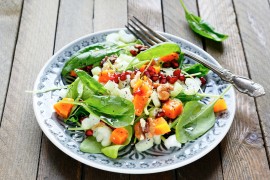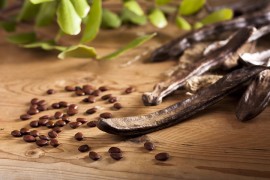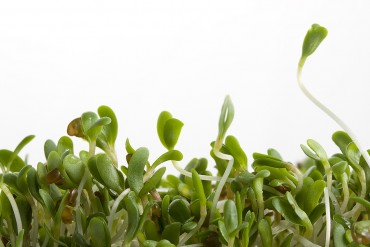By Thomas Billings.
Raw gourmet recipes often call for large amounts of raw nuts. For example, a recipe for raw cherry pie as served in a local (San Francisco, California area) raw restaurant specifies three cups of macadamia nuts for the pie crust and topping.
No doubt the pie is very delicious but that is a lot of fat.
Besides the excessive fat, there are other drawbacks to such recipes. The use of large amounts of raw organic nuts makes them:
- too expensive for those with low incomes
- too expensive for mass production/consumption, and
- a small quantity of rancid nuts in a recipe can force the chef to discard a large batch of very expensive food.
For a (2012) price comparison, a single slice of raw vegan faux cheesecake can cost $8+ here in California (if you can find it) while a whole conventional cheesecake can be purchased for $12. Needless to say, such a large price differential discourages those with conventional diets from sampling the raw vegan alternative.
To reduce the quantity of nuts and decrease the cost of gourmet raw recipes, fillers – usually (but not always) neutral or mild-tasting foods – can be used as a substitute for part of the nuts in a recipe. The fillers are ground up in a food processor/blender and a partial list is below.
As for which filler to use, that will depend on the recipe and preferences of the chef. In some recipes it may be appropriate to adjust the quantity of flavouring ingredients/spices to compensate for the lower fat content.
Prospective neutral/mild-tasting fillers to reduce nut and fat content include:
- Sprouted buckwheat (short sprouts, not exposed to light); these are also gluten-free
- Other grain sprouts; hullless sprouted oats, sprouted wheat (short sprouts, not exposed to light). Sprouted rye might work in some recipes
- Courgette (zucchini)
- Cauliflower
- Jicama
- Carrot
- Sweet potato
- Chinese pear
If the recipe is for a food that has a strong, possibly pungent flavour, then stronger flavoured fillers that may work include: radish/daikon and turnip.
The fillers above might also work to reduce the quantity of oily seeds in a recipe, e.g., sesame, sunflower, pumpkin.
The fillers above have high water content, and foods made with them need to be refrigerated and/or dehydrated to extend shelf-life. If you are a raw chef or prepare raw food recipes that include a lot of nuts, consider experimenting with the fillers above.
Thomas Billings has been following a high-raw vegetarian diet for over 30 years. He is an avid reader of scientific texts and papers in the field of nutrition and has written extensively on raw, vegan and vegetarian diets. Read his articles at BeyondVeg.com.





